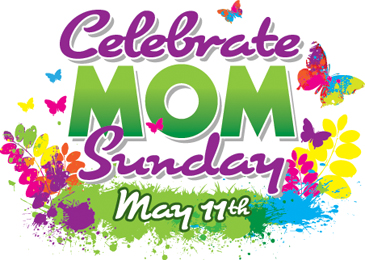Mother’s Day: A history — Mother’s Day is this Sunday

Only recently dubbed “Mother’s Day,” the highly traditional practice of honoring of Motherhood is rooted in antiquity, and past rites typically had strong symbolic and spiritual overtones; societies tended to celebrate Goddesses and symbols rather than actual Mothers.
One of the earliest historical records of a society celebrating a Mother deity is found among the ancient Egyptians, who held an annual festival to honor the goddess Isis, who was commonly regarded as the Mother of the pharaohs.
The festival of Isis was also celebrated by the Romans, who used the event to commemorate an important battle and mark the beginning of Winter. Yet the Roman root of Mother’s Day is perhaps more precisely found in the celebration of the Phrygian goddess Cybele, or Magna Mater (Great Mother). Cybele stems from the Greek Goddess Rhea, who was the Mother of most of the major deities including Zeus. Rhea was therefore celebrated as a mother goddess, and the festival took place around the time of the Vernal Equinox.
Later incarnations of a holiday to honor Motherhood came from Europe. Falling on the fourth Sunday Lent, early Christians used the day to honor the church in which they were baptized and regarded as their “Mother Church.” This place of worship would be decorated with jewels, flowers and other offerings.
In the 1600’s a clerical decree in England broadened the celebration to include real Mothers, referring to the day as Mothering Day. Mothering Day became an especially compassionate holiday toward the working classes of England. During this Lenten Sunday, servants and trade workers were allowed to travel back to their towns of origin to visit their families.
Mothering Day also provided a one-day reprieve from the the fasting and penance of Lent so that families across England could enjoy a family feast — Mother was the guest of honor. Mothers were presented with cakes and flowers, as well as a visit from their beloved and distant children.
When the first English settlers came to America, they discontinued the tradition of Mothering Day. While the British holiday would live on, the American Mother’s Day would be invented — with an entirely new history — centuries later.
One explanation for the settlers’ discontinuation of Mothering Day was that they just didn’t have time; they lived under harsh conditions and were forced to work long hours in order to survive.
The first North American Mother’s Day was conceptualized with Julia Ward Howe’s Mother’s Day Proclamation in 1870. Despite having penned The Battle Hymn of the Republic 12 years earlier, Howe had become so distraught by the death and carnage of the Civil War that she called on Mothers to come together and protest what she saw as the futility of their sons killing the sons of other Mothers.
At one point Howe even proposed converting July 4 into Mother’s Day, in order to dedicate the nation’s anniversary to peace. Eventually, however, June 2 was designated for the celebration. In 1873, women’s groups in 18 North American cities observed this new Mother’s holiday. Howe initially funded many of these celebrations, but most of them died out once she stopped footing the bill. The city of Boston, however, would continue celebrating Howe’s holiday for 10 more years.
Despite the decided failure of her holiday, Howe had nevertheless planted the seed that would blossom into what we know as Mother’s Day today. A West Virginia women’s group, led by Anna Reeves Jarvis, began to celebrate an adaptation of Howe’s holiday. In order to reunite families and neighbors that had been divided between the Union and Confederate sides of the Civil War, the group held a Mother’s Friendship Day.
After Jarvis died, her daughter Anna M. Jarvis campaigned for the creation of an official Mother’s Day in remembrance of her mother and in honor of peace. Her request was honored, and on May 10, 1908, the first official Mother’s Day celebration took place at Andrew’s Methodist Church in Grafton, W. Va., and a church in Philadelphia. The West Virginia event drew a congregation of 407 and Anna Jarvis arranged for white carnations — her Mother’s favorite flower — to adorn the patrons. Two carnations were given to every Mother in attendance. Today, white carnations are used to honor deceased Mothers, while pink or red carnations pay tribute to Mothers who are still alive.
In 1908 a U.S. Senator from Nebraska, Elmer Burkett, proposed making Mother’s Day a national holiday at the request of the Young Men’s Christian Association (YMCA). The proposal was defeated, but by 1909 46 states were holding Mother’s Day services as well as parts of Canada and Mexico.
Anna Jarvis quit working and devoted herself full-time to the creation of Mother’s Day, endlessly petitioning state governments, business leaders, women groups, churches and other institutions and organizations. In 1912, West Virginia became the first state to officially recognize Mother’s Day, and in 1914 Woodrow Wilson signed it into national observance, declaring the second Sunday in May as Mother’s Day.
The holiday flourished in the United States, but the budding commercialization of Mother’s Day greatly disturbed Jarvis, so she vociferously opposed what she perceived as a misuse of the holiday. In 1923, she sued to stop a Mother’s Day event, and in the 1930s she was arrested for disturbing the peace at the American War Mothers group. She was protesting their sale of flowers. In the 1930s, Jarvis also petitioned against the postage stamp featuring her Mother, a vase of white carnations and the word “Mother’s Day.” Jarvis was able to have the words “Mother’s Day” removed.
Despite her efforts, flower sales on Mother’s Day continued to grow. Florist’s Review wrote, “Miss Jarvis was completely squelched.” Anna Jarvis died in 1948, blind, poor and childless. Jarvis would never know that it was, ironically, The Florist’s Exchange that had anonymously paid for her care.























